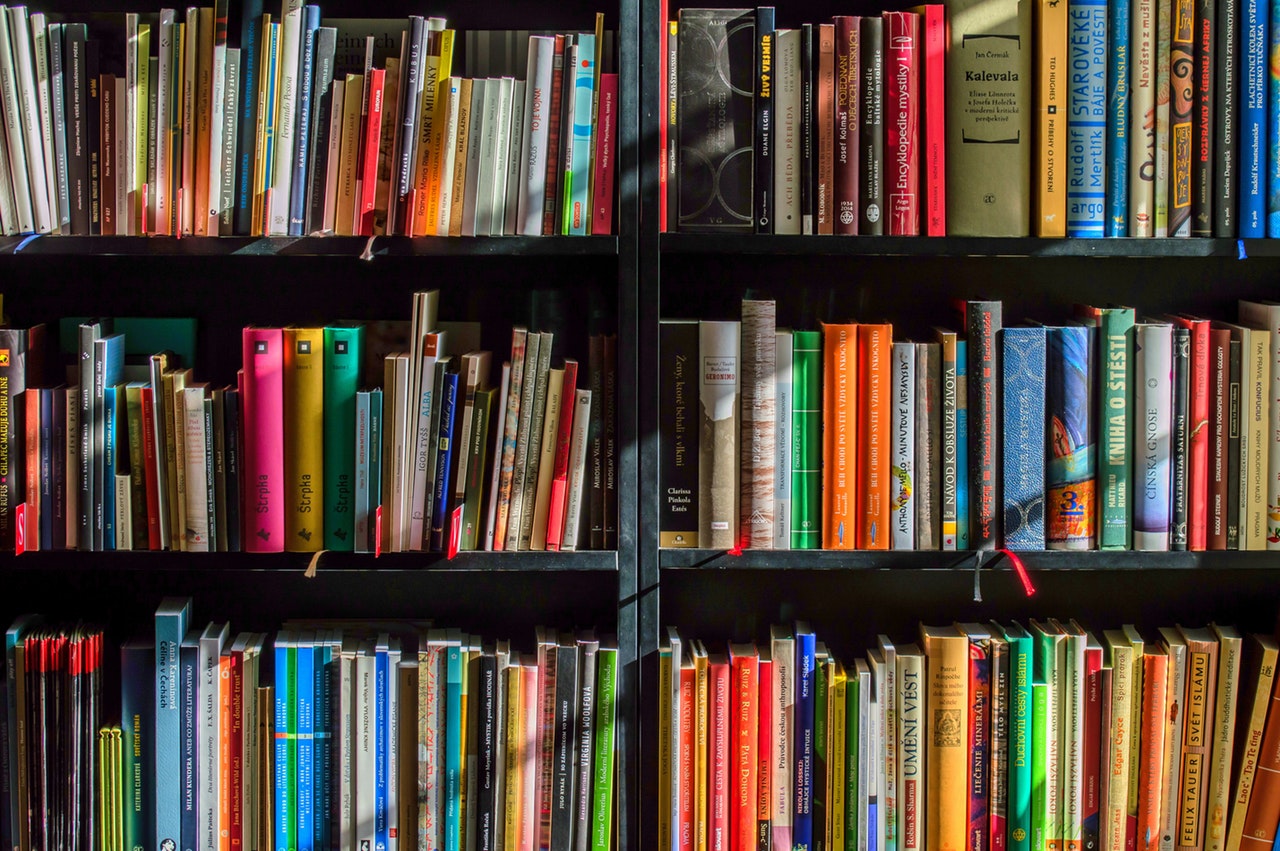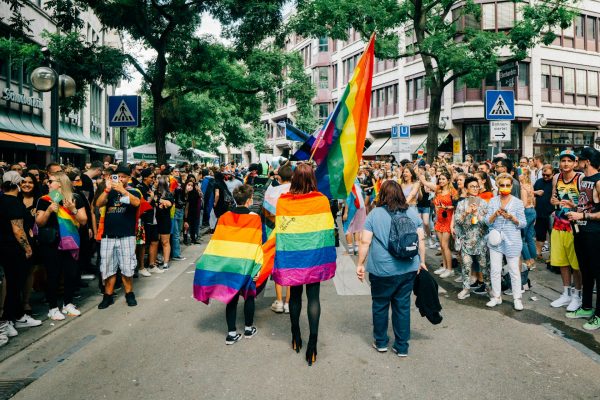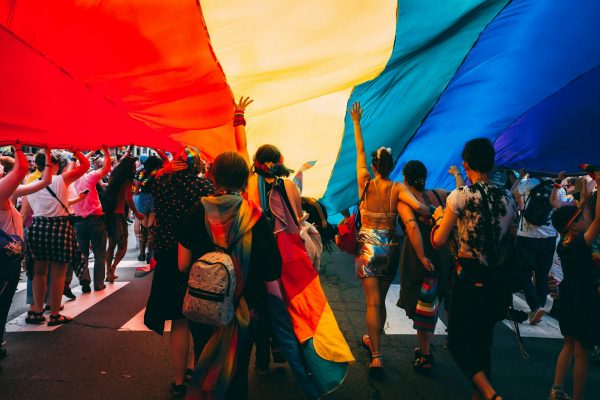For many readers, literature is our first avenue into the queer world. While mainstream media slowly catches up with queer representation, literature has always been at the forefront of the LGBTQ+ movement.
Since the dawn of time, literature has been a safe space in which the queer can be explored, represented, and discussed. Here, we look at just four beautiful books in which this is done.
Some of these are books entirely about queer love. Others are books that simply feature queer love. Regardless, each one has a lesson it can impart to us.
Warning: this article contains spoilers.
Maurice — E.M. Forster
The English novelist E.M. Forster is perhaps best known for books like A Passage To India and Howard’s End, richly complex explorations of social conventions and imperial criticism.
But his posthumous novel Maurice is a sharp turn from his usual fare. Exploring the relationship between two men, Maurice also gives us an insight into Forster’s own struggle with his sexuality at a time when homosexuality was illegal.
The novel follows the titular Maurice as he leaves prep school and heads to public school, tentatively entering into a relationship with fellow student Clive, using ancient Greek writings on same-sex love as a conduit to this.
Clive eventually leaves Maurice and gets married to a woman, leaving the latter to visit a hypontist in an attempt to ‘cure’ him of his homosexuality.
What we can learn from it
It feels moot to remind you that homosexuality is still illegal all over the world. Even many Western countries have only recently embraced it in law (the US only federally legalized it in 2015).
In Maurice, Forster writes that “England has always been disinclined to accept human nature.” Alas, it is not just England that has been so averse to the natural expression of queer love.
There are Maurices all over the world in countries that have not yet caught up with the rest of the modern, loving world. Discrimination is everywhere, and coming out is never easy, even in enlioghtened Western countries. It is something queer culture should not — indeed, cannot — forget easily.
The Color Purple — Alice Walker
This one is a staple of required reading in schools the world over. Ask someone who’s read it what they thought of it and you’ll likely receive a response of shock and horror — while beautifully written, it is a traumatic tale that stays with you long after you’ve finished it.
Couched in a hotly-charged racial background, The Color Purple explores what it means to be black, queer, and a woman in a world geared against these qualities. Celie and Shug’s relationship is about more than just Sapphic love — it is a validation for Celie, a simple quality that she was denied throughout her life.
The relationship between Celie and Shug is not a simple, gratuitous, lesbian affair. It is the bedrock of something deeper, something that resonated (and will continue to do so) with queer readers all over the world.
What we can learn from it
Queer love isn’t necessarily a romantic pursuit in and of itself. Romance and relationships in the queer spectrum are also a vehicle for discovering oneself, and exploring one’s identity.
In a heteronormative world, queer love is more than a simple romance. It is an odyssey of the identity, a medium through which not just sexuality is explored, but also gender, race, social background, and more. Indeed, for queers and cis straights alike, feeling worthy and loved is of the utmost value, something that transcends the qualities that make us both disparate and the same.
The Color Purple is an intersectional masterpiece whose voice echoes through the years. For young queer readers, it offers an avenue into the queer that is at once accepting, inclusive, and diverse in the same breath.
A Little Life — Hanya Yanagihara
A Little Life is the second novel by Hanya Yanagihara, and after it was published in 2015, it became a bestseller.
The novel focuses on the lives of four friends in New York City, following them from college graduation through to middle age. We watch Malcolm, JB, Willem, and Jude as they navigate work and personal crises, but it is the latter two characters that are the most poignant.
Little is revealed of Jude at the beginning, although much is hinted. Gradually, the reader comes to learn of Jude’s horrific abuse at the hands of his primary caregivers and so-called loved ones during his youth. When we meet him, he self-harms regularly and often relies on crutches to help him walk.
As the friends grow older, Jude and Willem enter into a relationship. However, due to his past sexual abuse, Jude does not enjoy sex, and the pair have an open relationship.
What we can learn from it
Throughout the novel, Willem is depicted as a cis straight man. But the love that blooms during his friendship with Jude turns into a deeper, romantic love. During their open relationship, Willem continues to sleep with women whilst still leading a happy, loving life with Jude.
A queer relationship is not black or white. It is invariably colored by our past experiences, and indeed by the experiences gleaned from living in a heteronormative society.
A queer romance is rarely as paint-by-numbers as that of a straight romance. Nor is it as simple — a friendship is a courtship is a relationship is a soulful bond that lasts a lifetime. Each one bleeds into the next, and
Captain Corelli’s Mandolin — Louis de Bernières
Louis de Bernières is known for his florid, poetic prose and compelling narratives that border on the edge of the fantastic. No more is that evident than in his bestselling masterpiece, Captain Corelli’s Mandolin.
Whilemainstream readers were transfixed by the affair between the eponymous Captain and Pelagia, queer readers were drawn to the sweet but heartrendingly tragic narrative of Carlo Guercio — L’Omosessuale, as his chapters are titled.
Guercio is an Italian soldier serving under Captain Corelli during the Second World War. He is a behemoth of a man but, in contrast to his peers, he is shy and sensitive. He is also deeply in love with Corelli.
For his part, Corelli is oblivious to Guercio’s affections. The only time he gains an inkling of Guercio’s affections when, seconds away from being executed by firing squad, the giant Italian throws himself in front of Corelli. His body absorbs the bullets and Corelli is spared.
What we can learn from it
Guercio’s arc is a tragic one. He makes the ultimate sacrifice for someone he loves, a love that is not only forbidden but unrequited.
But Guercio’s story is made all the sadder by the solitary nature of his struggle. Only the reader is given an insight into his love for Corelli (although his written record is passed onto Corelli posthumously).
Queer representation is better than it’s ever been, but there are still barriers that stop prevent people from coming out or embracing their sexuality.
2019 is not 1941, and the world is a very different place today. Queer love exists, and will always exist.
But hiding this love is torturous. Even today, queer love isn’t always so welcome. Even in urban metropolises like New York, there are silent pockets of resistance against something that is natural and otherwise widely accepted in the mainstream.
The four books mentioned here are just the tip of the queer literature iceberg. There is an entire canon of queer literature out there, an ocean in which those who are curious, exploring, or simply reveling can immerse themselves in.






